I am a compete novice at using loops and simplifying my code.
I have a dataset of places with accompanying data that I would like to plot on separate maps. The individual plotting of the maps I can do.
However I would like to automate the process a little bit, I have new data arriving each day and don't want to repeat the process of cleaning the data and rewriting code.
So I thought a for loop might be the answer
What I need are separate plots for each Time in the data below
So the loop would pull out all the data for each value of Time and then plot it.
dput(df)
structure(list(Site = c("O242", "O51", "O59", "O71", "C110",
"C116", "C120", "C13", "C132", "C134", "C139", "C140", "C29",
"C30", "C33", "C48", "C56", "C9A", "MP25", "MP67", "B30", "MP2",
"B101", "B11", "B112", "B15", "B197", "B2", "B217", "B22", "B30",
"B95", "MP21", "MP25", "MP33", "MP51", "MP56", "MP6", "MP60",
"MP61", "MP67", "MP77", "EX84", "EX92", "SW130", "O31", "O38",
"O38B", "O48", "O58", "O59", "O68", "O71", "O72", "O81", "O94",
"O207", "O209", "O210", "O215"), Time = c(-25, -22, -22, -22,
-14, -14, -14, -14, -14, -14, -14, -14, -14, -14, -14, -14, -14,
-14, -23, -23, -20, -20, -11, -11, -11, -11, -11, -11, -11, -11,
-11, -11, -10, -10, -10, -10, -10, -10, -10, -10, -10, -10, -10,
-10, -10, -10, -10, -10, -10, -10, -10, -10, -10, -10, -10, -10,
-10, -10, -10, -10), Code = c(1L, 1L, 1L, 1L, 2L, 2L, 1L, 1L,
2L, 2L, 1L, 1L, 1L, 1L, 1L, 1L, 1L, 2L, 1L, 1L, 3L, 1L, 1L, 1L,
1L, 1L, 1L, 1L, 1L, 1L, 3L, 2L, 1L, 2L, 1L, 2L, 2L, 2L, 2L, 2L,
1L, 1L, 1L, 2L, 1L, 2L, 1L, 3L, 2L, 1L, 3L, 1L, 1L, 3L, 2L, 2L,
3L, 1L, 1L, 2L), lon = c(-1.341280663, -1.343562025, -1.343620358,
-1.340629756, -1.332551665, -1.329108814, -1.328655294, -1.330835311,
-1.330715028, -1.33052464, -1.328144549, -1.328287425, -1.329353862,
-1.329343236, -1.33041446, -1.325353001, -1.327279282, -1.332909331,
-1.300122834, -1.299148682, -1.310197641, -1.305886812, -1.308725397,
-1.309505208, -1.309235075, -1.308580716, -1.30959055, -1.308685087,
-1.309426224, -1.306562029, -1.310197641, -1.307564253, -1.301598673,
-1.300122834, -1.299510666, -1.299846899, -1.297823339, -1.305388627,
-1.297220016, -1.297398331, -1.299148682, -1.300378324, -1.333554619,
-1.338688389, -1.332015649, -1.344951753, -1.344769267, -1.345214102,
-1.342514477, -1.343145083, -1.343620358, -1.34275518, -1.340629756,
-1.339067762, -1.338035147, -1.335442485, -1.346461847, -1.34550727,
-1.34516939, -1.346584124), lat = c(51.76635545, 51.76553293,
51.76450781, 51.76428383, 51.75689245, 51.75615401, 51.75742817,
51.75637019, 51.75666667, 51.75740286, 51.7596281, 51.75976378,
51.75721637, 51.75695556, 51.75701561, 51.75871255, 51.75875955,
51.75720018, 51.76339382, 51.75986347, 51.76597134, 51.76737513,
51.76464054, 51.76481595, 51.76542577, 51.76557477, 51.76682149,
51.7644335, 51.76714421, 51.76681267, 51.76597134, 51.76571265,
51.76447255, 51.76339382, 51.76268887, 51.76062289, 51.76030512,
51.76678776, 51.75996884, 51.75968219, 51.75986347, 51.75998767,
51.76749876, 51.76822905, 51.76474771, 51.76863319, 51.76622254,
51.7655237, 51.76482531, 51.76430735, 51.76450781, 51.76421526,
51.76428383, 51.76308822, 51.76434118, 51.76525265, 51.76642077,
51.7672966, 51.76661139, 51.76598088)), class = c("grouped_df",
"tbl_df", "tbl", "data.frame"), row.names = c(NA, -60L), groups = structure(list(
Time = c(-25, -23, -22, -20, -20, -14, -14, -11, -11, -11,
-10, -10, -10), Code = c(1L, 1L, 1L, 1L, 3L, 1L, 2L, 1L,
2L, 3L, 1L, 2L, 3L), .rows = structure(list(1L, 19:20, 2:4,
22L, 21L, c(7L, 8L, 11L, 12L, 13L, 14L, 15L, 16L, 17L
), c(5L, 6L, 9L, 10L, 18L), 23:30, 32L, 31L, c(33L, 35L,
41L, 42L, 43L, 45L, 47L, 50L, 52L, 53L, 58L, 59L), c(34L,
36L, 37L, 38L, 39L, 40L, 44L, 46L, 49L, 55L, 56L, 60L
), c(48L, 51L, 54L, 57L)), ptype = integer(0), class = c("vctrs_list_of",
"vctrs_vctr", "list"))), class = c("tbl_df", "tbl", "data.frame"
), row.names = c(NA, -13L), .drop = TRUE))
If I was to do this by hand I would use dplyr::filter(Time == "x") then make each plot using leaflet like so
install.packages("leaflet")
library(leaflet)
statecol<- colorFactor(palette = "viridis", df$Code) #create the colour palette
plots<- leaflet() %>% setView(lng = -1.324640, lat = 51.770462, zoom = 13.25)
plots %>% addTiles() %>%
addCircleMarkers(data = df, label = ~as.character(df$Site), radius = 5, color = ~statecol(Code), stroke = FALSE, fillOpacity = 5) %>%
addLegend('bottomright', pal = statecol, values = df$Code,
title = 'Codes',
opacity = 2)
If there is a better solution than a loop I'd be happy to try that too. Hope this is clear and thanks in advance


